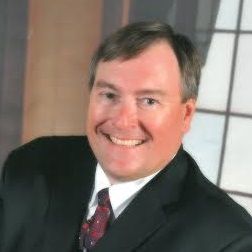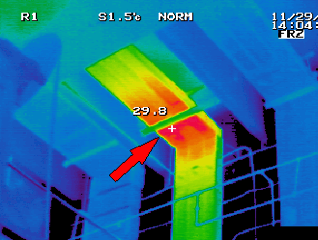- Home
- About
- Courses
- IR/INFO CONFERENCE
- Software
- EXPERT SERVICES
- STANDARDS
- Proposal Templates
- Electrical Systems and Rotating Equipment
- Building Envelopes
- Insulated Roofs
- Photovoltaic Systems
- Pest Detection
- Yachts and Small Craft
- Thermal Imaging of Horses
- Optical Gas Imaging
- Measuring Reflected Temperature
- Measuring Emittance
- Measuring Transmittance
- Distance/Target Size Ratios
- Complete Series
- Resources
- BUSINESS OPPORTUNITIES
- STORE

Director’s Message

Proper image focus is still one of the most important aspects of performing an infrared inspection. A clear image not only allows for optimal problem diagnosis, but it is also critical for accurate temperature measurement.
Clear focus is not difficult to achieve if you follow a few simple steps:
- Get as close as safely possible to your target.
- Take time to carefully focus for optimum clarity. This may take some practice if you have a motorized focus mechanism.
- Ascertain that your target is stationary.
- Only shoot from a stable platform. If imaging from a motor vehicle, it may be desirable to shut off the engine to avoid vibration.
Be sure your imager is steady as you capture the image. Gently push the store button rather than punching it. If using a handheld imager, consider using a tripod or monopod to help stabilize your imager.
Once you’ve stored an image, recall and check for clarity. If the results are less than perfect, start over. In addition to greater accuracy, capturing clear images makes it easier to convey information to the end user and/or the person who will eventually perform corrective actions.
IR/INFO 2019 A Resounding Success

Infraspection Institute’s IR/INFO Conference was recently held in New Orleans, LA. IR/INFO 2019 marks the 30th anniversary for the advanced training conference, technical symposium and technology expo.
IR/INFO was attended by infrared thermographers, PdM technologists, and building inspection professionals from around the world who enjoyed four days of networking, learning, and fun in a relaxed and professional atmosphere.
We thank our exhibitors, our speakers and all who attended and helped to celebrate the 30th anniversary of our IR/INFO conference. Plans are already underway for IR/INFO 2020 and we look forward to seeing you there!
Infraspection Awarded Trademark by USPTO

The United States Patent and Trademark Office (USPTO) has awarded Infraspection Institute registration for its mark and designation, ‘Infraspection Institute Master Thermographer’.
Responding to requests from thermographers and consumers alike, the Infraspection Institute Master Thermographer® Program is a unique approach to establishing thermographer qualifications. Unlike certifications that rely solely upon the completion of formal training classes, this program is based upon thermographer training, experience, and professional references.
Initial qualification is good for two years and must be renewed biannually. Participants in the program will enjoy several exclusive benefits including permission to use the Infraspection Institute Master Thermographer® seal on their websites, business cards, and company literature. They also qualify for a free listing in the Infraspection Institute Master Thermographer® directory.
Jim Seffrin, Director of Infraspection Institute, stated: “We have invested considerable time and effort into achieving this registration; however, we believe it will help to positively influence our industry. All experienced thermographers are encouraged to join our program in order that they may receive the professional recognition they truly deserve.”
IR Inspections of Electrical Bus Ducts

Even with regular tightening of bus duct connections, loose/deteriorated connections are difficult to detect. With the bus duct under load, a thermal imager can readily detect the temperature differentials associated with loose connections. Properly functioning bus ducts should exhibit no temperature differential in the vicinity of bolted connections. Because bus duct conductors are hidden from direct line of sight, any inexplicable temperature differentials should be investigated and corrected immediately. Disconnect switches and cable connections should be checked for thermal anomalies as well.
To ensure complete coverage, bus duct should be inspected from both sides of the duct along its entire length. Termination cabinets should also be inspected once the covers have been removed. Annual or semiannual infrared inspections performed by certified, experienced thermographers should be used to supplement regular bus duct maintenance.
Thermal image appears courtesy Thermal Technologies, Inc.
Professional Curriculum
Infraspection Institute instructors use extraordinary techniques to deliver stimulating, effective, and relevant instruction. All of our instructors are highly experienced, practicing thermographers. Each brings years of unmatched, real-world experience to the classroom. Our courses are taught using a combination of dynamic multi-media presentations, hands-on demonstrations and one-on-one interaction with students. Our courses integrate theory, practice, and case studies in a fun, relaxed atmosphere designed to maximize your learning experience.
